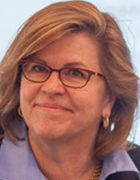There’s never been a better time for the re-invention of educational media. Honestly, it’s a veritable Golden Age for the field, what with John and Hank Green working their magic with the Crash Course videos on history, literature, psychology and science. Andrew Schribman has launched media literacy videos featuring Ruff Ruffman, the lovable goof-ball dog. I love the work of Amy Burvall and History Teachers, who creates great pop song remixes on a wide range of historical subjects. And now science educator, Derek Muller (whose YouTube channel, Veritasium, is a treasure trove of science videos) offers a tight and important synthesis of the history of educational media with a great review of the educational media research literature.
As a learner, teacher and educational media producer myself, I’ve been part of educational media history since the 1960s, when as a child, I got to watch the NASA space missions in the classroom of my elementary school. I viewed Sunrise Semester in high school, which featured a very young Neil Postman making his television debut teaching media literacy.
The research question at the heart of my work is: How do people learn with and about visual media? Derek’s great YouTube video reminded me about my very first scholarly publication in a project developed by Professor David Perkins at Harvard Graduate School of Education. We wondered: what do people who learn to code actually learn? Entitled, “Conditions of Learning in Novice Programmers,” this was among the earliest studies to explore whether or not learning to code developed transferable cognitive skills.
Since then, I’ve been lucky to get to create educational media and to research its value as a tool for learning. I’m convinced that video texts are incredibly powerful in meeting the needs of learners of all ages. Creating My Pop Studio gave me a chance to explore how to create educational games for girls ages 9 – 14 as a means to develop media literacy competencies through play and learning. Working with Michael RobbGrieco and Greg Beatty to create Schoolhouse Rock-style pop songs was a real treat. What’s Copyright? and User Rights Section 107 enabled us to use the power of rhyme, rhythm and animation to teach about copyright and fair use. YouTube is unleashing the creative genius of many educators — and it’s a powerful tool for lifelong learning, that’s for certain.
And soon, this coming January, we will be rolling out Mind Over Media: Analyzing Contemporary Propaganda, a new interactive user-generated content website designed to explore, analyze and reflect upon contemporary propaganda which today can be found on countless media platforms and in advertising, public relations, journalism, entertainment, advocacy and education.
This semester, my experience with the evolution of educational media includes creating a MOOC on copyright and fair use for digital learning, where I was very pleasantly surprised to see real evidence of learning occur as self-motivated individuals engaged in meaning-making, analysis and genuine dialogue in a large-scale community context. Teaching a fully-online graduate course using the concept of the open-network learning environment has intensified my curiosity about how to use digital tools to create a seminar-style learning experience. I’m eager to see how I can use digital media in ways that create high levels of respect and trust, which is needed for genuine learning to occur.
Next semester, I will be working to tackle the theory and practice of student-created media production as learning in EDC 534, Seminar in Digital Authorship, a fully-online open network course which is part of the Graduate Certificate in Digital Literacy. In the process, these experiences have raised lots of questions for me. These days I’m musing on issues of social responsibility and ethics in some of the weirder dimensions of human social relationships in online education. I continue to work on getting the balance right between play and learning, immersion and critical distance, constructing media and deconstructing it, and teacher-centered creativity vs learner-centered creativity. I’m also wondering about the practical consequences of the vast increase in amateur, student-created and teacher-created media products that are now in narrow or wide circulation. I’ll tackle some of these questions in 2015 in this blog and in other publications. But until then, I’m grateful to be part of a community of learners who are exploring how visual and digital media may support and extend learning both in and out of school.
